[Molimerx, TRS-80]

How can we defeat Napoleon ? He predicts all our moves !
Let’s regroup our armies in megastacks and move in a totally random pattern. He won’t be able to predict THAT.

Napoleon starts in June 1798, when Emperor Napol… ah wait ! I don’t know what I am drinking. General Bonaparte is off to Egypt, we are not an Empire but a Directoire. I am leading our armies so I must be Directeur Paul Barras. At the very least, I hope I am not one of those Directeurs that history forgot, like [checks Wikipedia] Jean-François Moulin. Also, this is the month of Prairial Year 6. Obviously. I have no idea why I used the old reactionary calendar. Force of habit, I suppose.
In any case, we happen to be at war against, well, almost all of Europe :
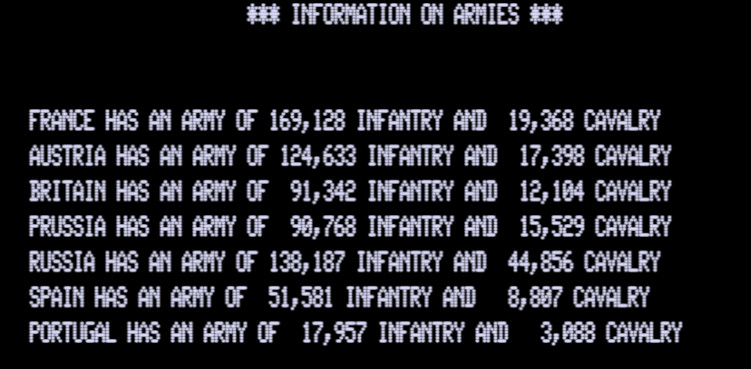
Currently, all my armies are located in Greater France. The one that includes Belgium and Cologne.

Finally, budget-wise, I am not in deficit, unlike some other countries :
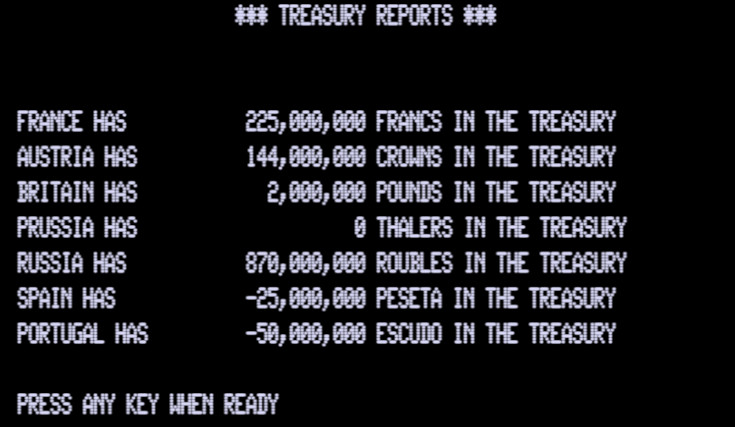
I use all that cash to recruit a bunch of soldiers :
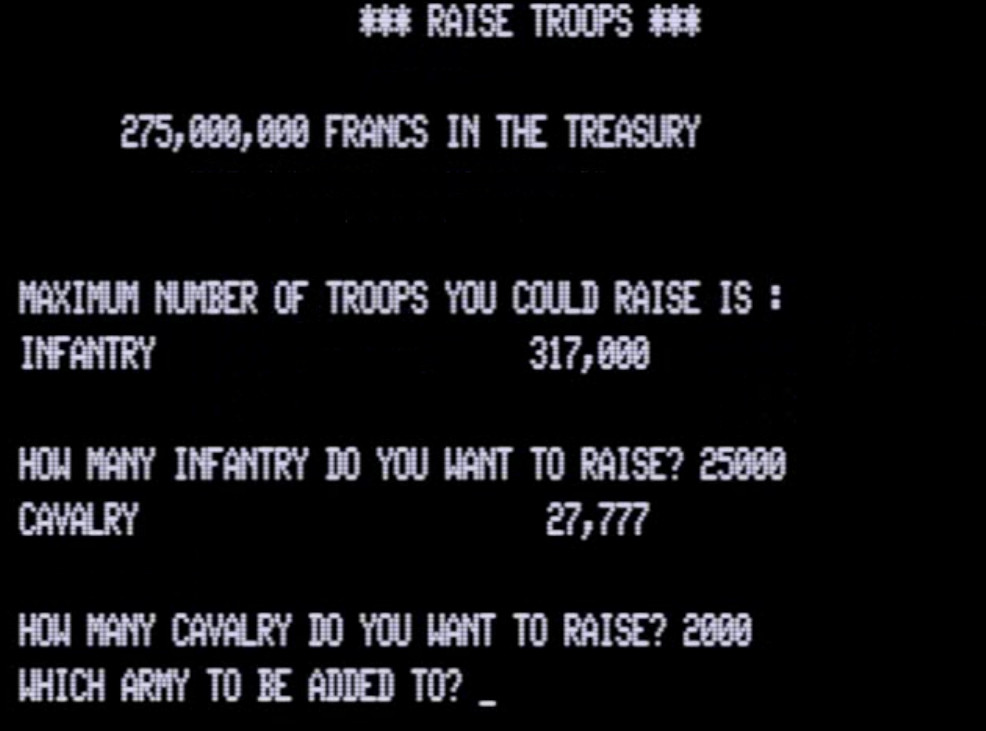
One infantry costs 2 500 Francs and one cavalry 9 000 Francs. Initially, the key-constraint is cash but later it is manpower (shared between infantry and cavalry) so it is not wise to dump everything into infantry.
I buy around 100 000 infantry and 15 000 cavalry. I now have an army that outnumbers any 2 opponents. Of course, those countries that are not out of cash are also going to recruit, so this advantage will not last.
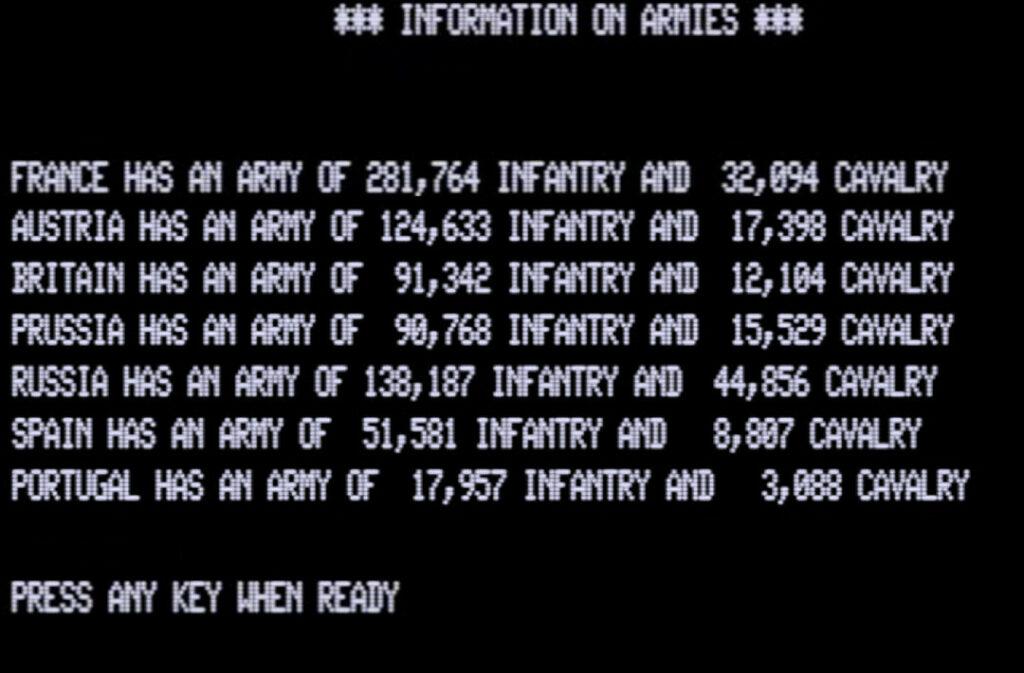
Time to conquer. I could move my armies either East against the Prussians and Austrians, or South against the Spaniards. I choose the latter option without any hesitation – I don’t think there is a better strategy because :
- In Napoleon, territory has no value at all, ever. It is not even owned, it is just some space that armies need to cross. There is no economy, instead each country gains a fixed amount of cash and manpower every year,
- Spain and Portugal start with negative cash, so it will take them some time before they can reinforce their armies, and these are puny at the moment,
- Finally, Spain and Portugal are small, so it should be fast. Much better to beat them quickly, then turn toward Russia, then try to go East and then double-back to Spain.
I allocate all my armies to Spain and Portugal. 300 000 men against less than 100 000, it should be quick. And if the 100 000 redcoats are there as well, all the better.
And so I start moving :

In Octob… Brumaire ! I meant Brumaire ! I reach the border of Spain. My attack is slowed down because the only way to gain passage to Spain is by hugging the Western coast. Trying to cross by Perpignan (near the Mediterranean) will trigger a message that it is not possible and waste the movement of your army. That’s where I am at the end of the campaigning season.
The campaigning season starts again in Prairial Year 7, so in this game you have 6 months of moving or fighting and 6 months of wintering. Because you know, the terrible Spanish winters.
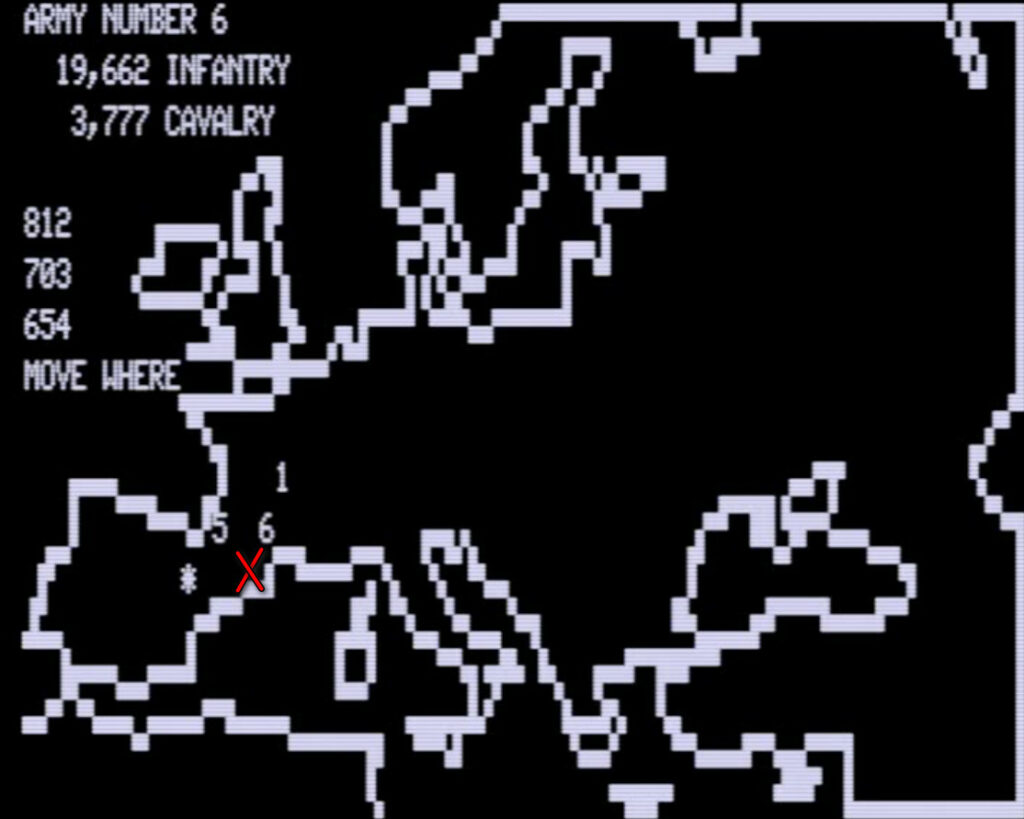
In Prairial Year 7 I receive cash : 600 000 000 Francs. I also receive 100 000 manpower. That’s what I will receive every Prairial from now. This means once my initial manpower runs out I will be able to buy at most 55 000 cavalry and 45 000 infantry every year.
it is a bit more complicated though : there is a maintenance cost of 150 000 000 Francs by month, and if I don’t pay it I will pay an attrition fee in soldiers (5% to 10% a turn). But note that even if I don’t spend I will have 2 months of attrition – no way to avoid that. So the game is all about when to buy the troops to make the best of the available manpower…
… something that went totally above my head as this AAR is about my first and only play of Napoleon, except for a few test turns. So I happily bought as many troops as I could immediately to defeat the Spaniards.
The campaign in Spain resumes Year 7 and I discover with joy that the Brits are in Spain as well – it will allow me to kill them quickly !
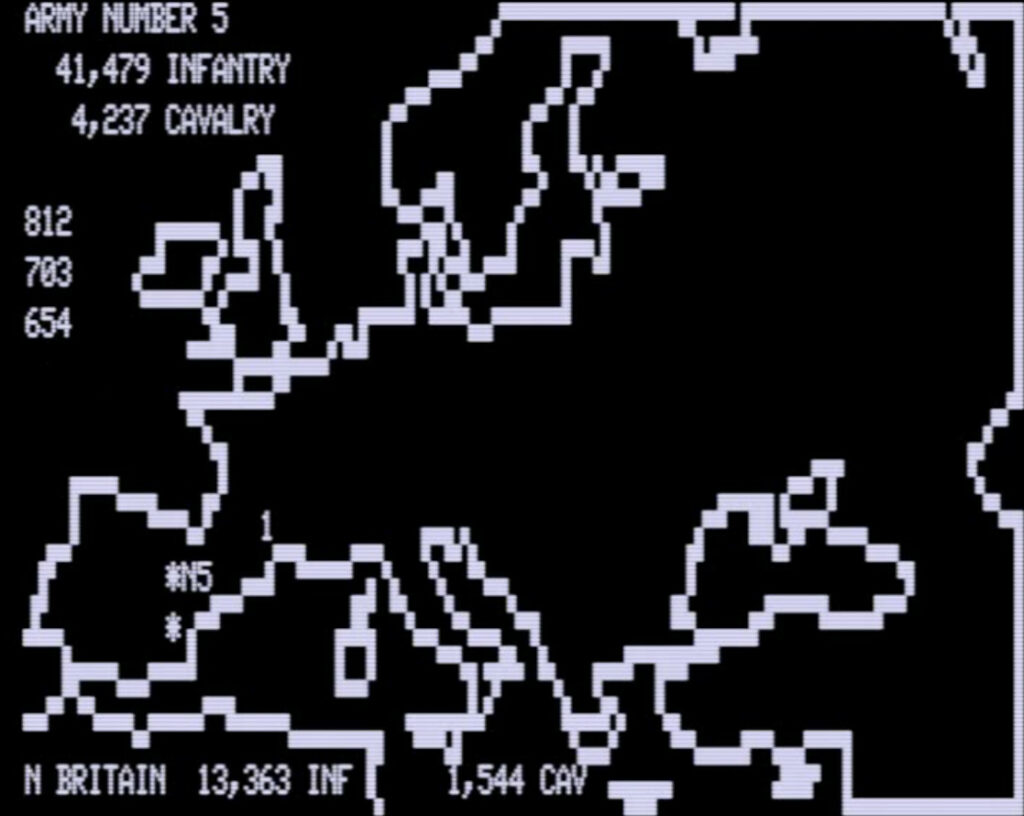
I fight my first battle against a British army. unfortunately, the results are very random and despite outnumbering them 3:1 I receive very high losses :

Battles don’t trigger any retreat, and there are no rules against stacking units, so I leave units in the back to intercept enemy armies that may try to go through mine, and pummel the other ones turn after turn. Once an army is reduced to less than 1000 men, it disappears and can never be recreated.
The following months are kind of a blur, but the Spanish army pays a heavy tool :
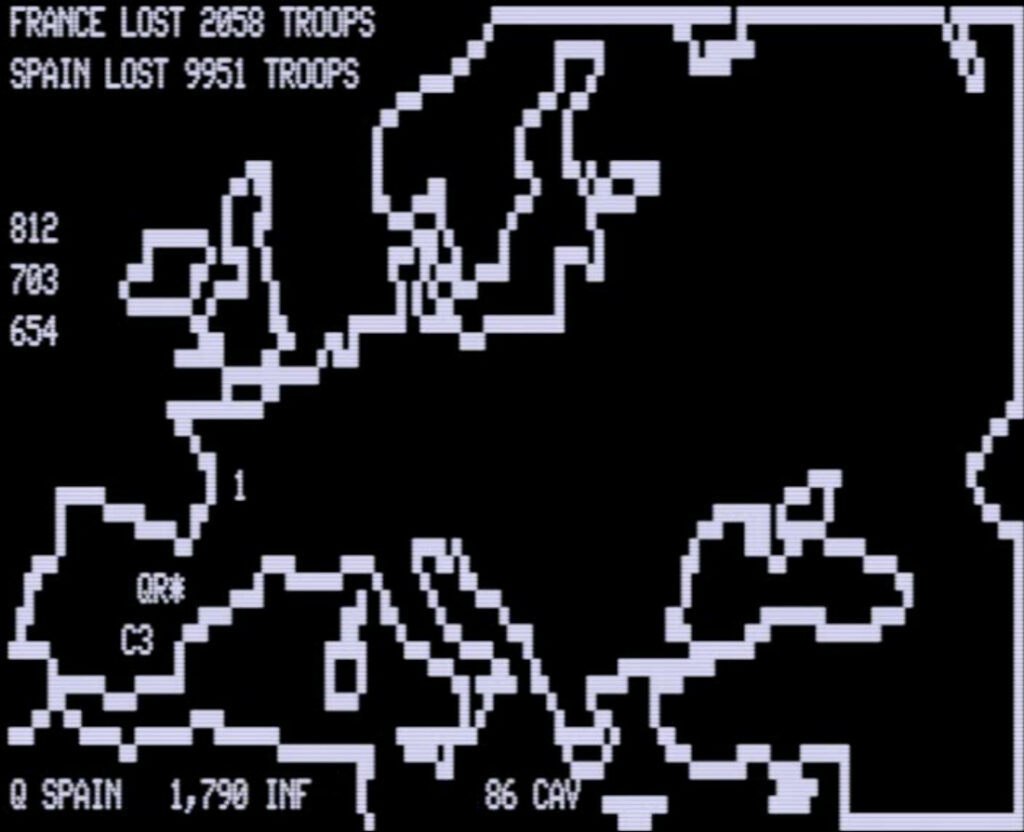
Eventually, at the end of year 7, the Spanish forces are obliterated, though at least one English army survived. I haven’t reached Portugal yet. Things should go faster soon : this bright general, Bonaparte, has returned victorious from Egypt. He will command our Spanish armies, but first he told me he wants to come to Paris visit his brother.
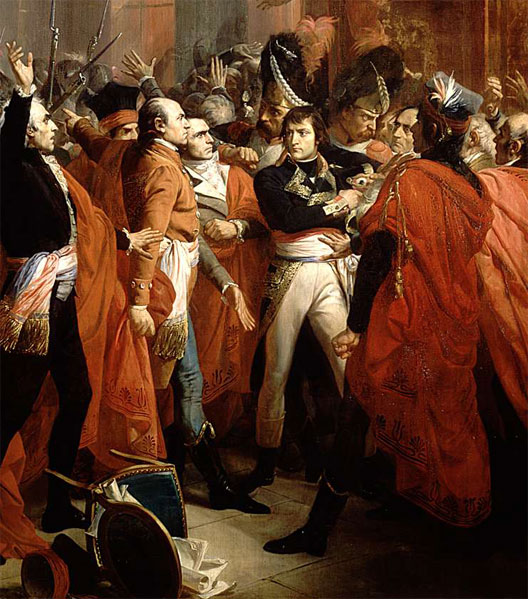
It is Prairial, year 8. I, Premier Consul Bonaparte, just took command of our forces in Spain. The situation is solid :
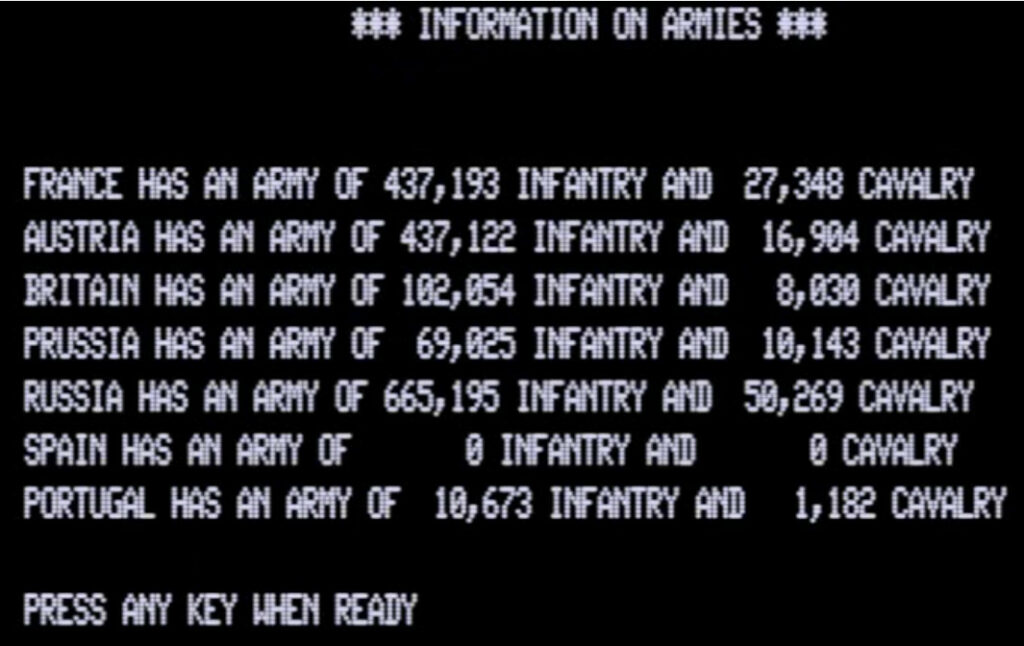
The Spanish army is gone. The Portuguese army is still unable to reinforce. On the other hand, the English crown has been able to reinforce its armies despite the massive losses it received. One of its armies is huge, and I can only fight it by reinforcing my own armies.
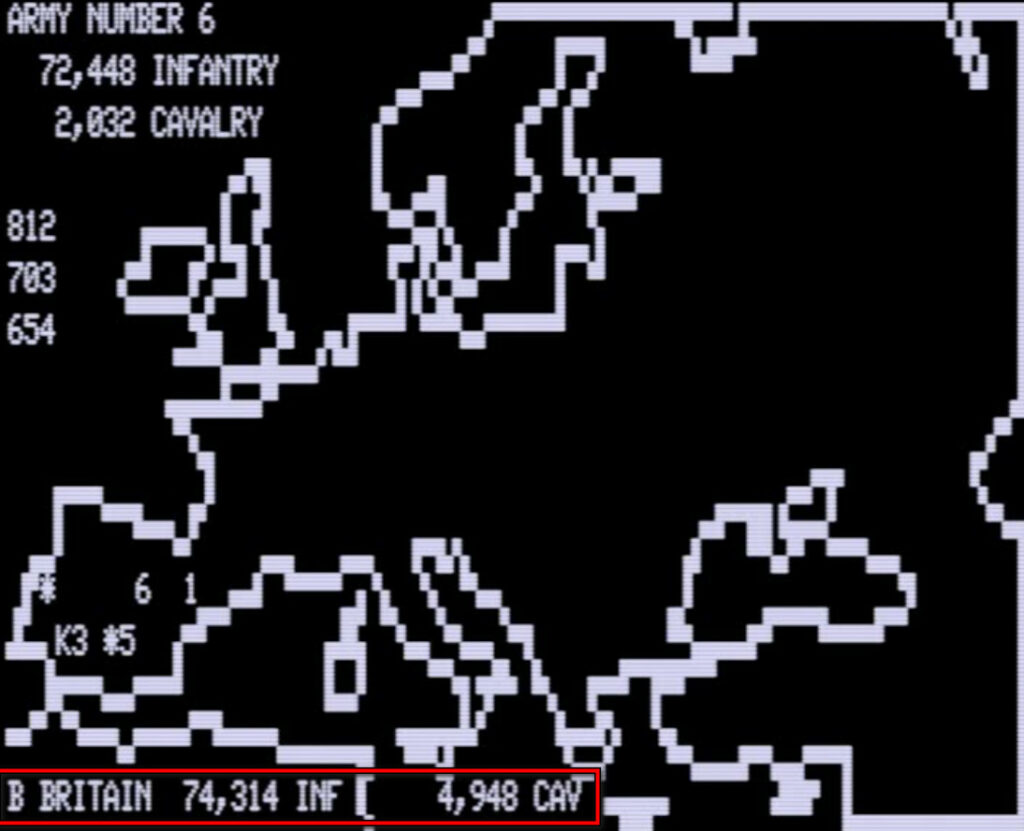
It takes me one year to reduce that army to almost nothing, receiving significant losses myself. At the beginning of year 9 (or, if you prefer, year 1800 according to the old calendar), that army is mostly gone. The Portuguese are finally starting to raise troops, but too little too late.
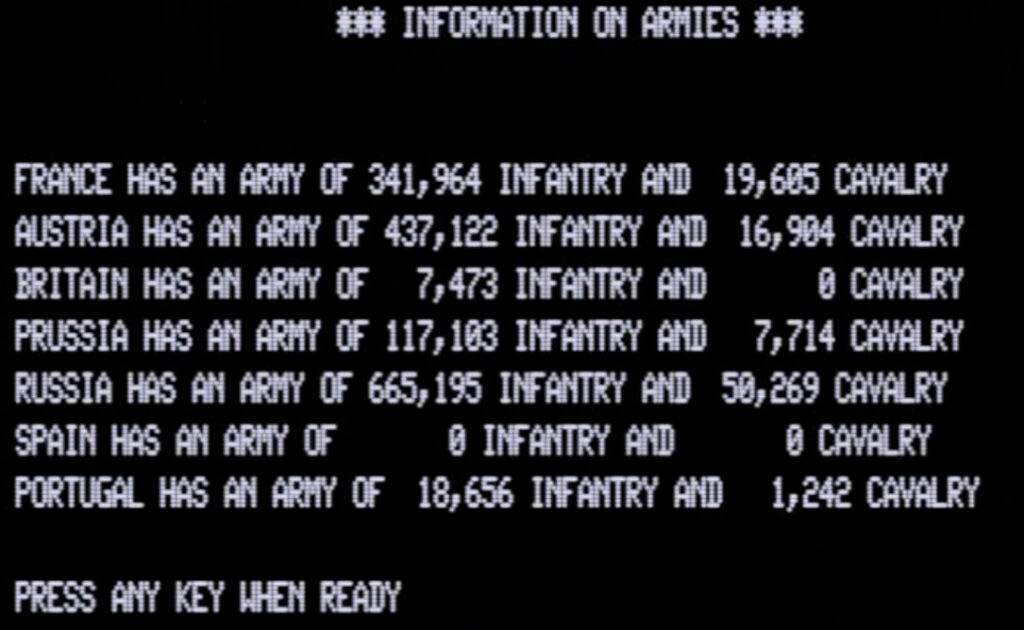
The remaining British are crushed only 2 months later in Messidor. Then, two more months later in Fructidor, Portugal disappears from the map – or rather – it takes a shade of blue as I put one of my brothers in charge.

I can now turn East. It will take me several years to move my force from Spain to the East, so let me get back to you around year 13. Meanwhile, I will keep myself busy with internal politics.
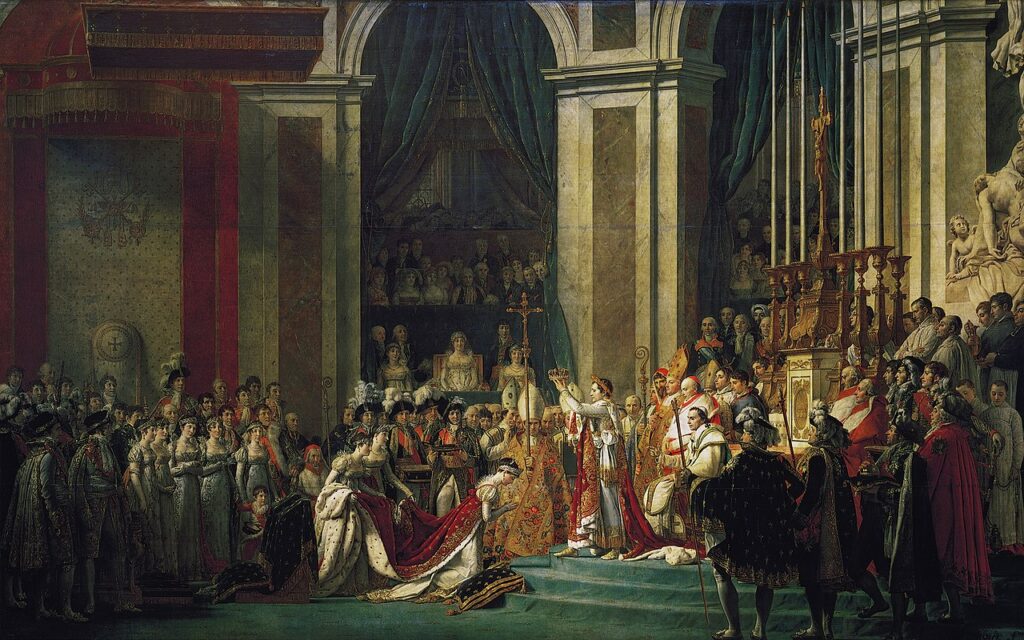
I, Emperor Napoléon, am back at the head of my armies. We are in May 1804, or Floréal year 12 as they still say in the Gazette.
The Austrians and Prussians have been nice enough to wait for me in their respective territories, and the French Imperial Forces have now crossed the border of the Holy Roman Empire, which is basically Austria at this point, except when the King of Austria is actually a Queen but I digress.
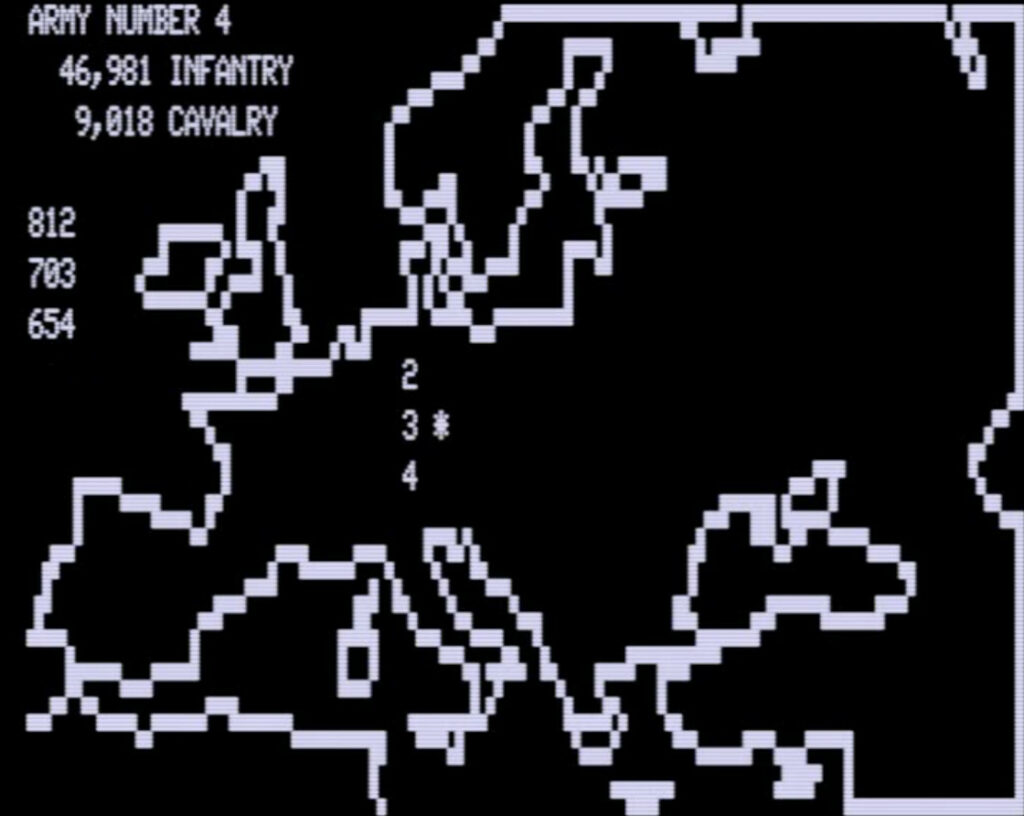
The war against the Austrians won’t be easy, they have quite an army :

The first army I encounter is actually Prussian and easily defeated. Advancing further, I find Austrians in Prussia and Prussians in Austria. M’kay.
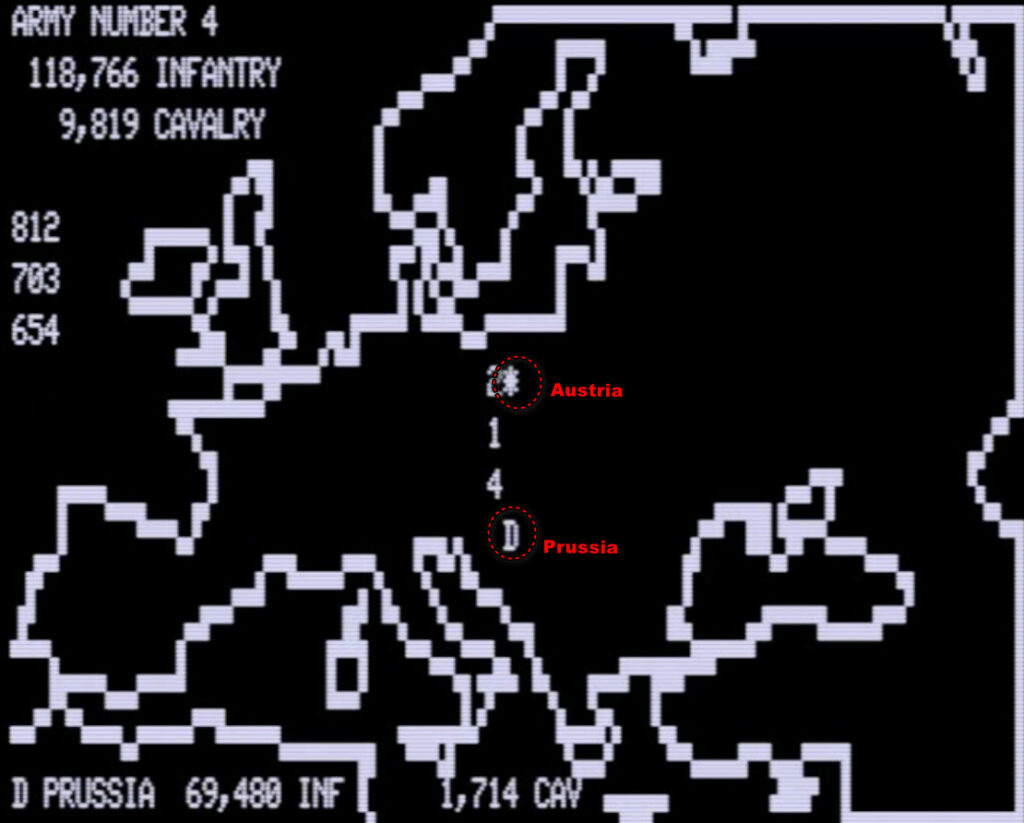
I focus on the Prussians first. By May 1805 (year 13 according to that odd calendar we are still officially using), they are destroyed.
The Prussians are destroyed in Austria, I then wheel North toward Prussia to defeat the Austrians. Perfectly logical.
But in October 1805 ( < air quotes >Vendemiaire year 14, </air quotes > enjoy it while you can, we are getting rid of all those ridiculous names at the end of the year. I just signed the senatus-consulte.), I have got a bit of a surprise :

The Austrians have a megastack !
You know what can beat a megastack ?
Another megastack, that’s what.
Before creating my own megastack, I spend a couple years finding and destroying the other Austrians armies. I am not threatened in any way by the Austrian megastack (enemy armies move randomly), but I don’t want the Austrians to dump all their reinforcements into another army I cannot see after I destroy the big one.
Eventually, in early 1807, after searching and destroying Austrian armies all over MittelEuropa (and noticing a Russian army doing God-knows-what in the Eastern Balkans), I create my megastack.

The Austrian mega-army has not increased in size, possibly its natural attrition matches how many reinforcements it can receive. My mega-army of 330 000 men attacks :

Not great ! I lose men faster than they do ! I transfer even more men from the other armies (I left them with 15 000 to 20 000 men, now I bring them down to 5000) and hit again and again, every time receiving at best equal losses, often more.
What saves me is that every year I receive more reinforcements than they do, and eventually in August 1809 :
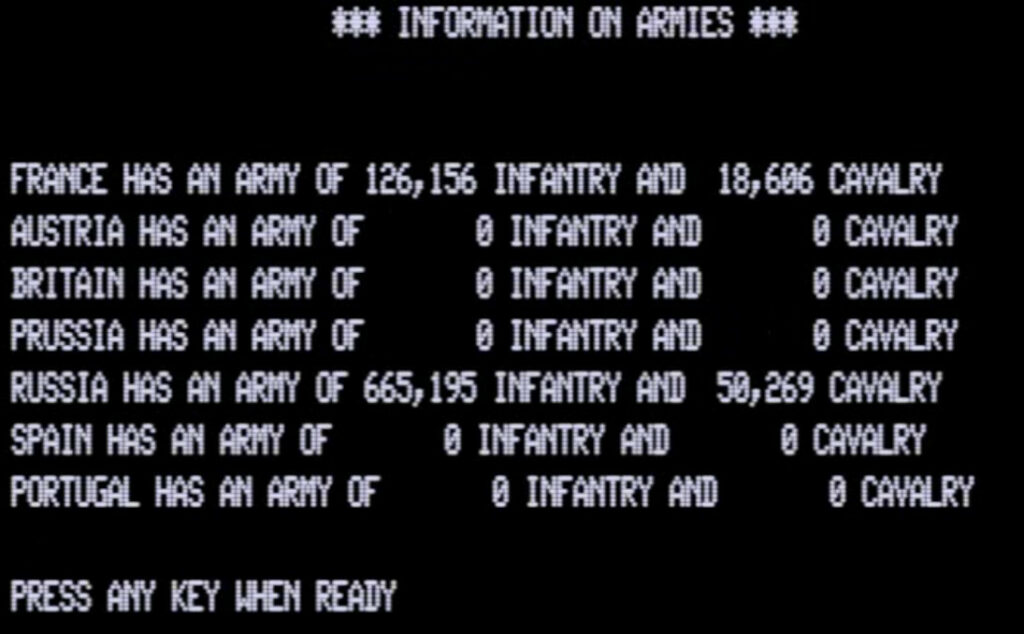
Only the Russians are left !
My army is in tatters, and as I exhausted my manpower. I ran out of manpower so I can only reinforce with the yearly 100 000 men, minus attrition. I will never match the Russians in size, but maybe I can defeat them in details.
In any case, I cannot count on attrition : Russia is loaded with cash and can feed its troops.

In 1810, I destroy the first Russian army – the one I had spotted earlier in the Balkans :
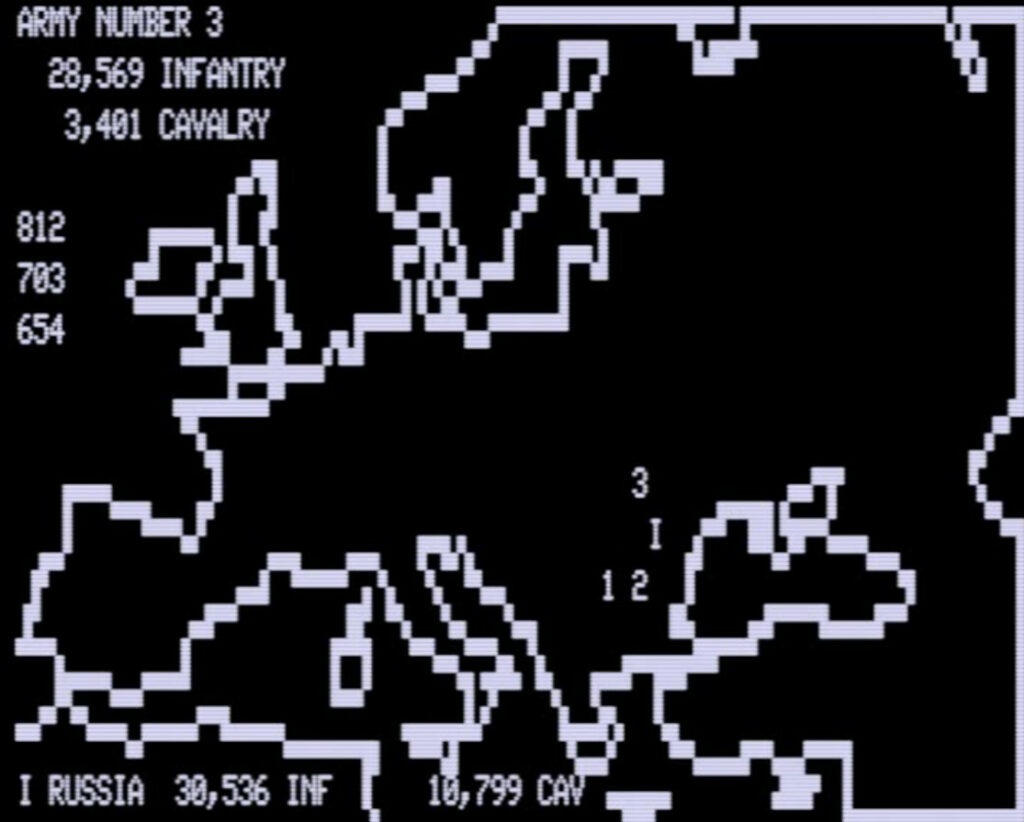
As 1811 starts, I realize I have 5 years left (30 turns) to find and crush all the Russian armies. Russia is vast and I can only hope that with their random walk a Russian army did not get lost in Turkey.
In 1812, I find and destroy a small Russian army in Belarus, before having a bit of a surprise in September :

590 000 men. Well, the “defeat in details” plan just went down the drain.
My only solution is to regroup absolutely everything I have, and hope for a lucky roll. I spend the rest of 1812, 1813 and 1814 searching and destroying the remaining Russian armies (they were near Moscow), before creating my own megastack. I megastack so much that 3 of my armies are dissolved by lack of men.
Alas, no way I regroup close to 600 000 men, but maybe by buying almost exclusively cavalry (which hit harder) I can compensate ?

My 300 000 men attack…
… and my army gets shot down immediately!

Here is what’s left of the Grande Armée after this battle : the Minuscule Armée.
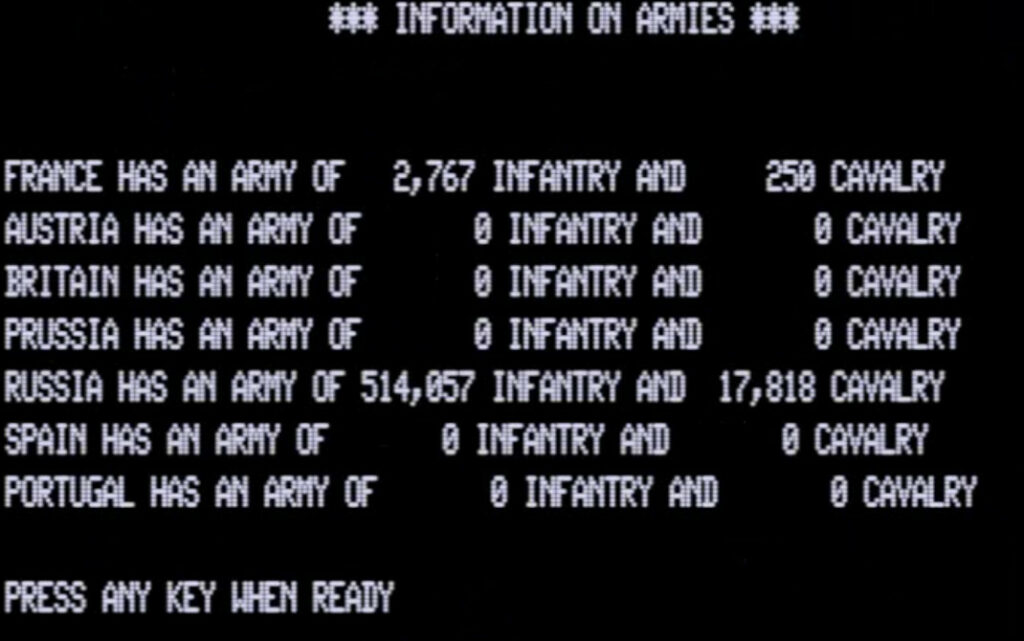
Well, that’s the end. I just gave Europe to Russia.
And a few turns later I have the most laconic end-screen I have ever met :

The campaign lasted more than 2 hours, and I hated every minute of it, so I am not going to try again. But looking back, I would probably have performed a lot better by not recruiting much to let my manpower grow, only bursting before meeting megastacks. With this method, I could have arrived in front of the final Russian army with enough reserve to recruit 240 000 men by year, and possibly slightly outnumber it. I was unlikely to outnumber it much due to attrition as you lose 1/3 of your total force every year IF you are lucky, but with a good final dice roll it could have been enough.
Review & Rating
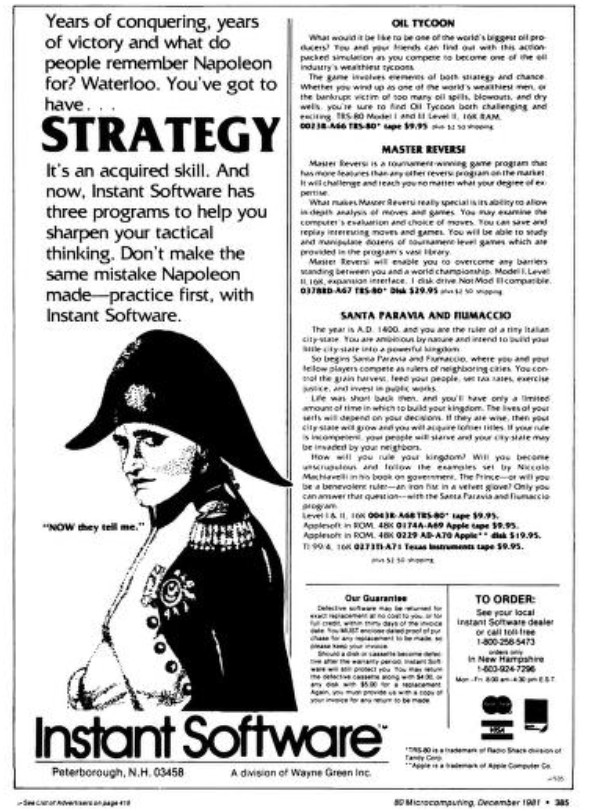
Napoleon by Simon Ford, published by Molimerx
First release : 1982 on TRS-80
Tested on : TRS-80 GP
Total time tested : 2.5 hours
Average duration of a campaign : 2 hours (feels like 4)
Complexity: Easy (1/5)
Would recommend to a modern player : No
Would recommend to a designer : No
Final Rating : Totally obsolete
Ranking at the time of review : 63/65
I have very little information about Napoleon and its designer, Simon Ford. Napoleon‘s copyright says 1980, but the game does not seem to have been distributed before 1982, and if it was it was not through Molimerx. Worse, the copyright in the game is for someone or something called “H. Pax”, when Molimerx’s catalogue makes it clear that Simon Ford is the author. As for Simon Ford himself, he wrote the two other Molimerx wargames (Crusaders and William the Conqueror) and then disappeared from the industry.

Like the other Molimerx wargames, Napoleon was ported on BBC Micro by someone called D.S. Peckett. In addition to a 8-bit Marseillaise in the splash screen that made me cry, and not due to emotion, the UI is changed a bit (sometimes for the better, sometimes for the worse) and critically the map is modified with a lot more areas “passable”, including at least Denmark, Southern Italy and UK (through the Netherlands). This creates a lot of areas where the AI can randomly wander to.
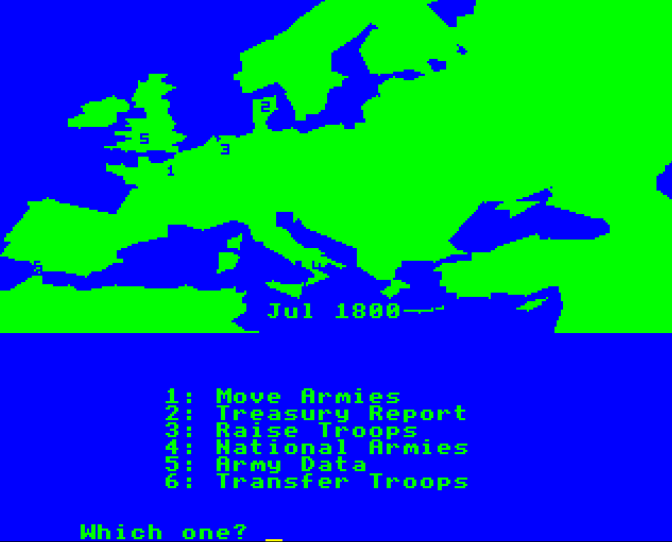
A. Immersion
There is a map of Europe and countries called “Austria”, “Russia” and “Spain”. That’s all the immersion in the period you will find.
Rating : Terrible
B. UI, Clarity of Rules and Outcome
Full disclosure : I did not find a manual for the game, though I believe it had one.
But even assuming that the manual is as clear as it could be, the UI of this game is terrible and it has all the markings of a 1979-1980 poorly playtested game, and then a few more :
- Some tiles look like they can be occupied but cannot. Some tiles are the opposite. Worse : if you make a forbidden move, the move is wasted (this was fixed on BBC Micro),
- The game is SLOW. It can also take some time to react (several seconds sometimes). If you tap again while waiting, then the extra input will be applied to the next unit,
- You have an option called “map” in the main menu that shows all the armies you can see. But when you move your armies, everything disappears. Your first army is blind, your second army sees the first army and what the first army saw, etc. Pointless.
As for the outcomes, it is almost possible to predict battle results or the effect of attrition.
Rating : Terrible
C. Systems
Despite featuring a map of Europe, there is absolutely no territorial control in this game. Your only objective is to find the enemy armies and destroy them – but keep in mind that destroying ONE army is pointless, because the AI will just recruit exactly as many troops at the beginning of each year and just distribute them between fewer armies (though honestly I believe it already distributes almost everything it has to one army).
There is no flanking, no supply line, no retreat, no zone of control, nothing, the only thing that matters is how big your army is so you have little incentive to actually use all your armies offensively. There is no reason not to make 1-2 huge armies to crush the enemy and use the rest as scouts. Your scouts are impossible to lose : the view range is 2 tiles, and the speed of everyone is one tile by turn.
Ultimately, the game is about managing when you recruit to maintain manpower, limit attrition and being able to defeat the final Austrian and Russian megastacks. Nothing fun nor Napoleonic.
Rating : Terrible
D. Scenario design and balancing
Except for marginal difference in army size and exact starting location within France, the only real randomization in this game is the starting location of the British armies.
The “AI” is basically pushing its armies in random directions every turn.
Rating : Terrible
E. Did I make interesting decisions ?
No. I rolled dice.
F. Final rating
Totally obsolete, and one of the worst games I have played. I have played many pointless games, but usually those have short sessions. Napoleon belongs to this rare category that is pointless, difficult to play due to UI issues and manages to drag the tedium forever. Unsurprisingly, I could not find any review for it. If it’s any consolation, Simon Ford’s other games look a lot more interesting than Napoleon based on my early tests. We will get to them.
As you may have noticed, there was no update and no way to comment for 2 weeks. Apologies if any of your comments was eaten. This was due to a technical back-end issue (I was out of database memory) that I did not want to tackle during the holidays. It is now solved. It also means I am slightly below my hopes in terms of articles prepared and/or published but well, they will be there eventually.